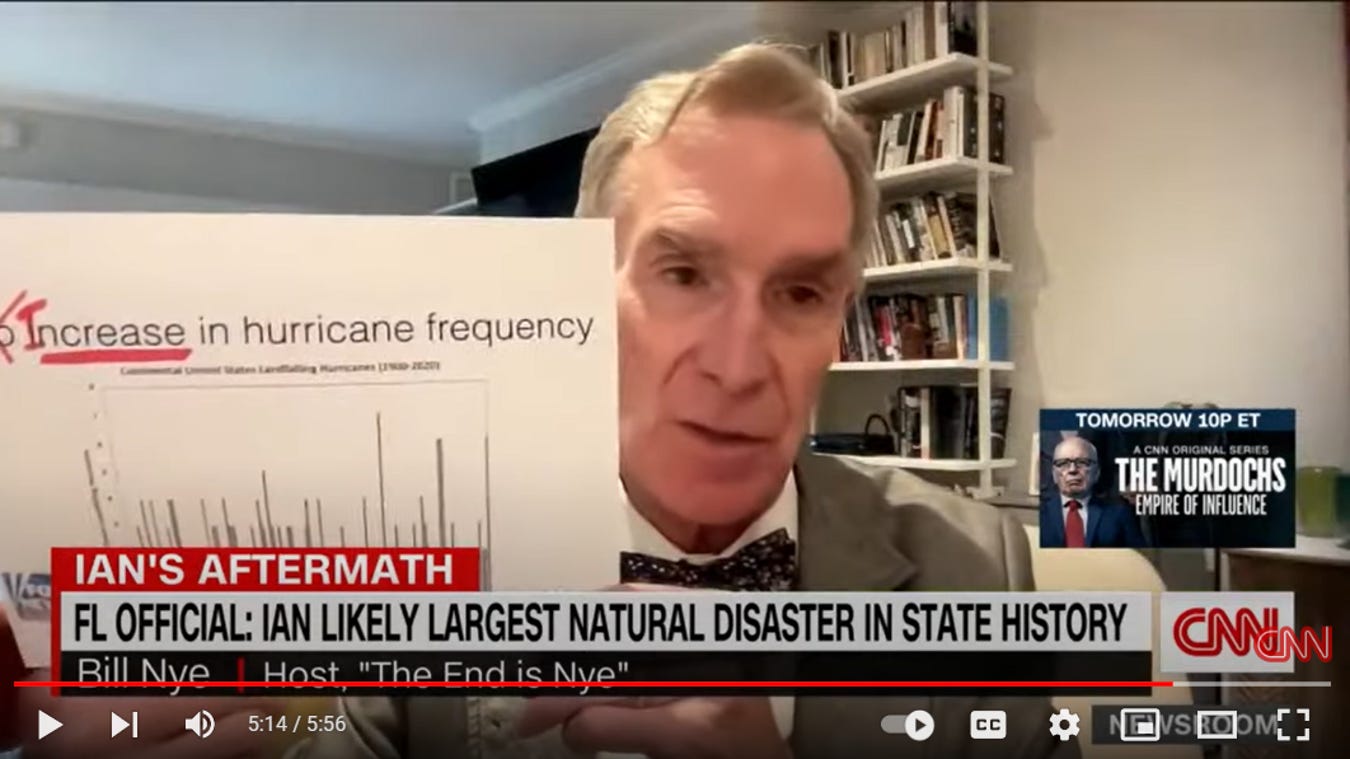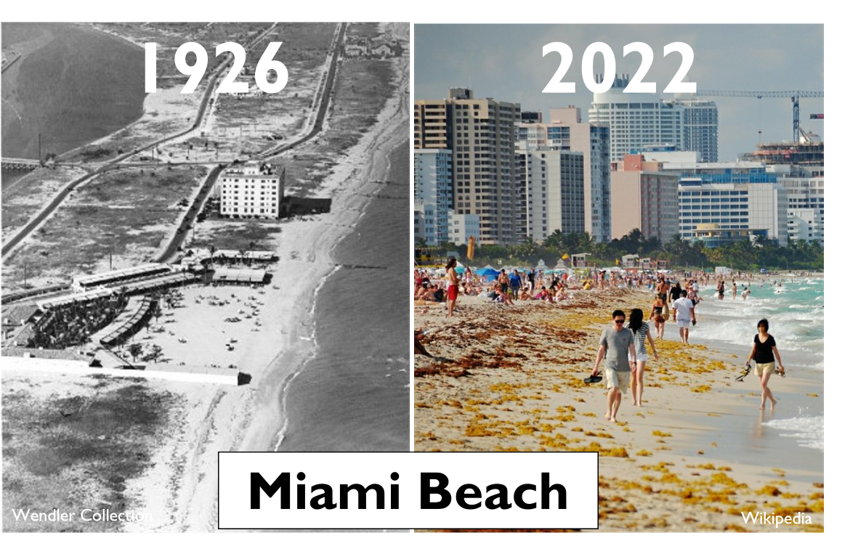https://rogerpielkejr.substack.com/p/2023-update-what-the-media-wont-tell
2023 Edition: What the media won’t tell you about . . . hurricanes – The science and data reporters refuse to report
Below are five important conclusions from the scientific literature that are rarely, if ever, found in coverage of hurricanes.
1. The scientific consensus on hurricanes and climate change is clear and consistent.
In short —trends in hurricane activity outside the range of documented variability have not been detected, nor is there high confidence in connections of hurricane behavior to greenhouse gas emissions.
Don’t take it from me. Here is what the National Oceanic and Atmospheric Administration (NOAA) said this month:
[F]or Atlantic hurricane activity, the attribution observed changes to increasing greenhouse gases is not yet assessed as highly confident, apart from impacts related to sea level rise. Observed hurricane data generally either do not show clear centennial-scale trends or do not cover enough years to assess century-scale trends. Pronounced multidecadal variations typically dominate over long-term (centennial-scale) trends over decadal timescales for Atlantic hurricanes.
NOAA’s assessment of scientific understandings is consistent with that of the most recent assessment of Intergovernmental Panel on Climate Change (IPCC):
[T]here is still no consensus on the relative magnitude of human and natural influences on past changes in Atlantic hurricane activity, and particularly on which factor has dominated the observed increase (Ting et al., 2015) and it remains uncertain whether past changes in Atlantic TC activity are outside the range of natural variability.
There are hypothesized effects — such as the rapid intensification of storms or enhanced precipitation — but NOAA concludes that “confident quantitative attribution” of changes in the phenomena to greenhouse gas emissions or internal variability “remains an unsettled topic of research.” The media often conflates hypotheses with firmly established conclusions.
NOAA further states:
- “an anthropogenic influence has not been formally detected specifically for hurricane-related precipitation”
- For storm numbers, rapid intensification probability and extreme precipitation, “climate change detection/attribution studies are not yet definitive for hurricane activity metrics, and more research is needed for more confident conclusions.”
- “it is premature to conclude with high confidence that human-caused increases in greenhouse gases have caused a change in past Atlantic basin hurricane activity that is outside the range of natural variability”
There is little ambiguity in the current state of the science of hurricanes and climate change.
2. Hurricane landfalls along the continental U.S. show no trends since at least 1900.
Here are all landfalling U.S. hurricanes since 1900.

Here are all landfalling major hurricanes since 1900.

I’ve not seen either dataset appear in the legacy media — well, except once, when Bill Nye “The Science Guy” printed out my graph and took a sharpie to it on CNN, apparently to “correct” the data to show an increase!

3. Development and growth are sufficient to explain why hurricane damage has increased dramatically

While climate change is typically the focus of attention when hurricanes make landfall, there is no debate that the single biggest factor driving increasing damage from storms is development — the growth of buildings and amount of wealth exposed to storms.
As blindingly obvious as this may seem, it is routinely ignored in the promotion of NOAA’s “billion dollar disaster” campaign.
For more than 25 years, my colleagues and I have estimated how much damage that storms of the past would cause if they occurred with contemporary levels of development. Our methods offer a useful independent estimate of such losses that can be compared to the results of catastrophe models.
…
4. Climate change is important, but far more important for understanding trends and causes of increasing disaster costs is societal change, especially what we build, where we build and how we build.
It is not just hurricanes. Damage associated with extreme weather events has increased dramatically in recent decades. The reason? More people with more stuff.
The map and graph below show population increases in different regions of the United States. We like to live where risks are high — in particular, East and Gulf Coasts (hurricanes) and California (fires and earthquakes).

…
5. The largest climate signal — by far — in the damage record of U.S. hurricanes is ENSO.
There are only a few times in my career when I can say that I actually discovered something fundamentally new. Once was in the 1990s when, along with Chris Landsea, we discovered a very strong signal in U.S. hurricane damage based on the phases of the El Niño/Southern Oscillation or ENSO.
In a nutshell, during the peak of the hurricane season (that is August-October) El Niño conditions have the fewest landfalls and damage and La Niña conditions have the most, with neutral years falling in between. You can see this in the figures below.

The panel on the left shows that there are almost twice as many hurricane landfalls in La Niña years compared to El Niño years. The panel on the right shows an even larger difference in median damage. But be careful — these are summary statistics with considerable variation and damaging storms can happen in any phase of ENSO.


